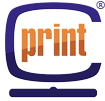If your WPM without abbreviations is close to your overall WPM with abbreviations, then you probably need to focus on building your abbreviation usage and building your dictionaries. Add words and phrases you are encountering in classes, etc. Commonly used phrases can save a ton of keystrokes. For example, if you are in a class where they say “chemical warfare” a lot, create an abbreviation for the entire phrase “chemical warfare.” Phrases make a huge difference. The more abbreviations you have, the more you can use, and the higher your overall WPM w/abbreviations will be relative to your WPM w/o abbreviations. Then you will know that the C-Print system is helping you.
If your WPM without abbreviations is low, then your focus should probably be less on C-Print and more on becoming a faster typist. You may have an abbreviation for every word and phrase in the English language, but if you can’t get them typed quickly enough the benefits will be marginal. And typing speed comes with practice and relaxation. (I find that tense typists slow themselves down.) Another good habit to always type everything at full speed, even when it is just a personal email. Always type as fast as you can and you will get faster and faster. It does take time, though. If you improve 3-to-5 WPM in a semester, you will have an improvement of 6-to-10 WPM in a year!
